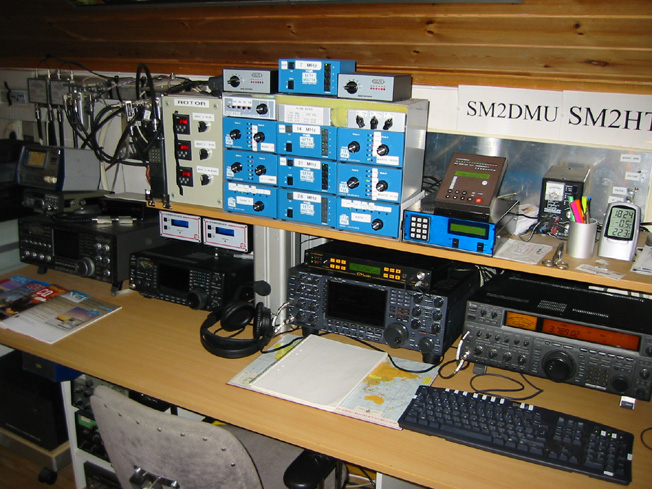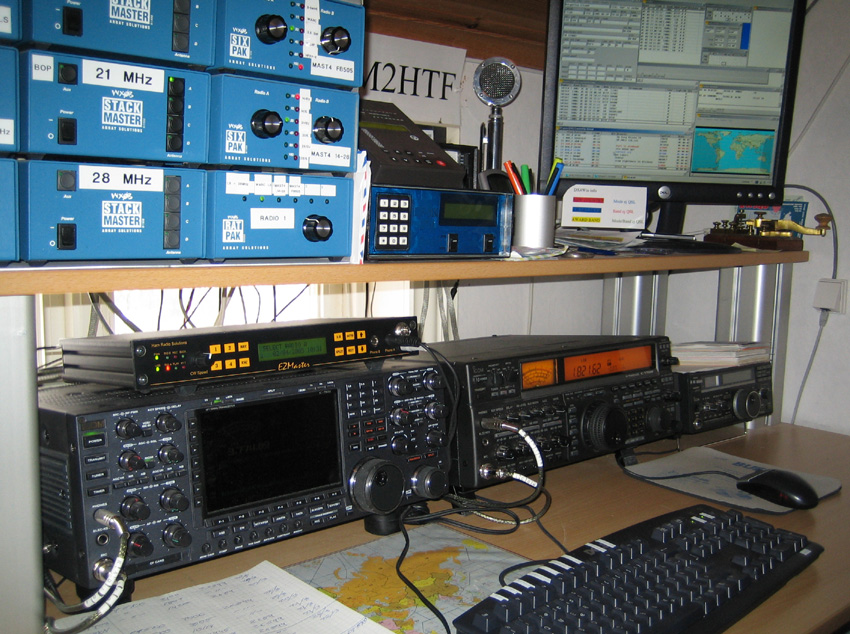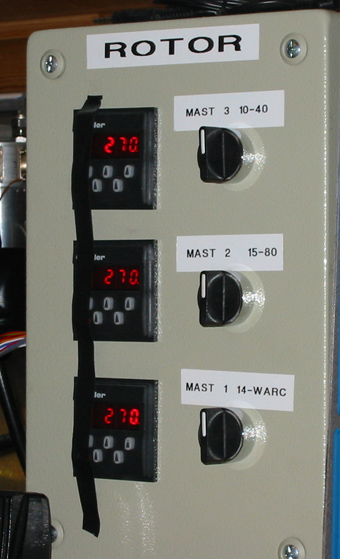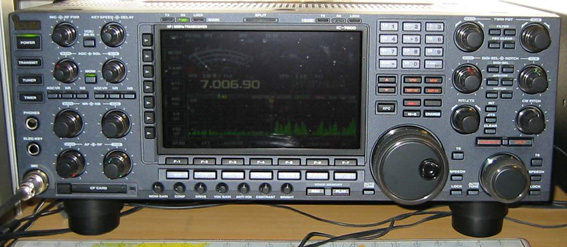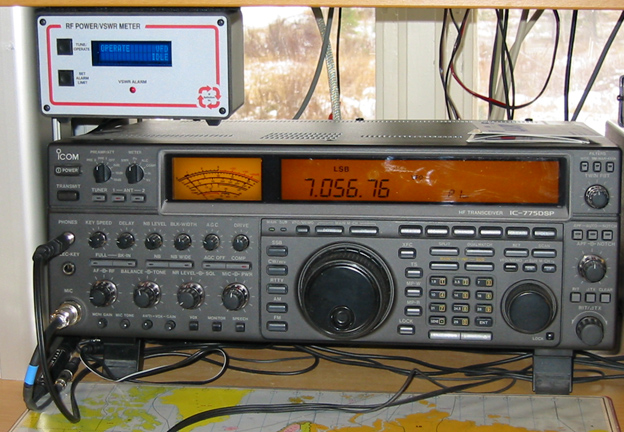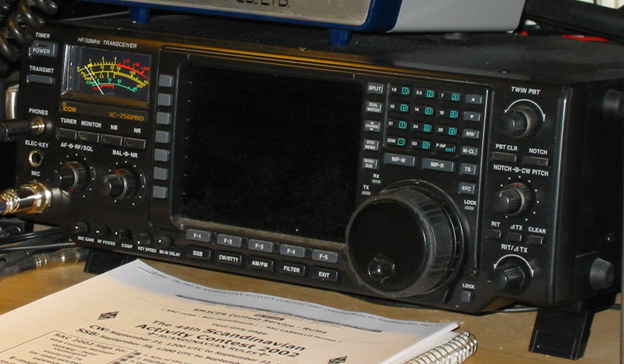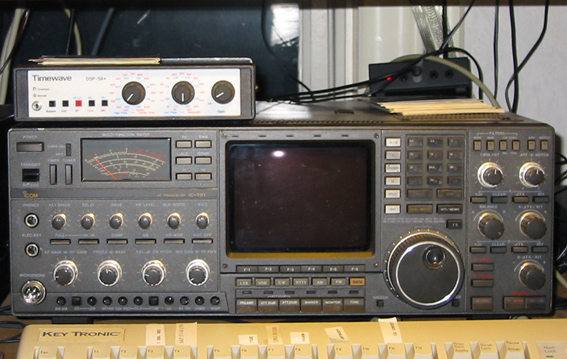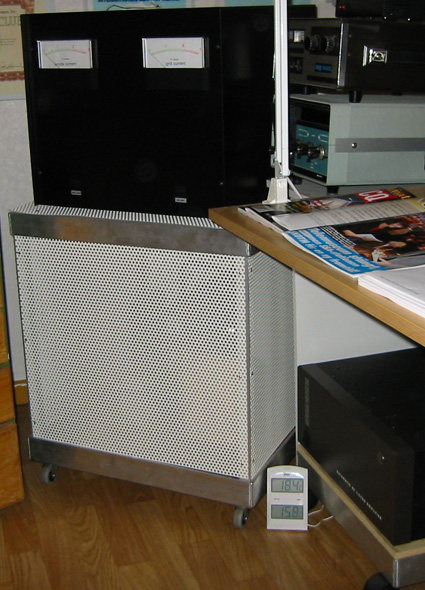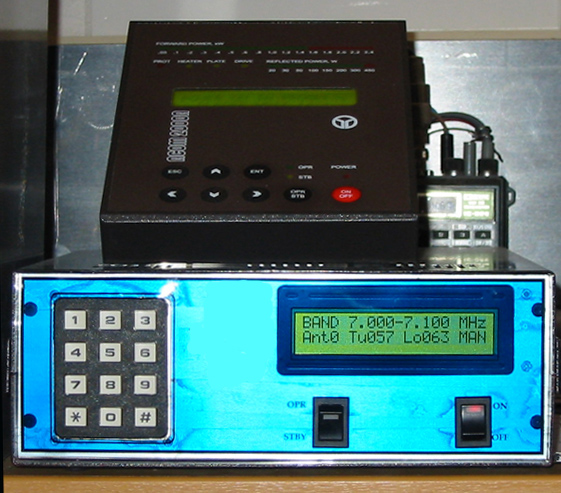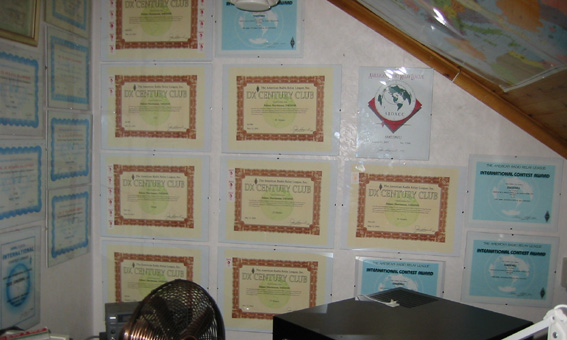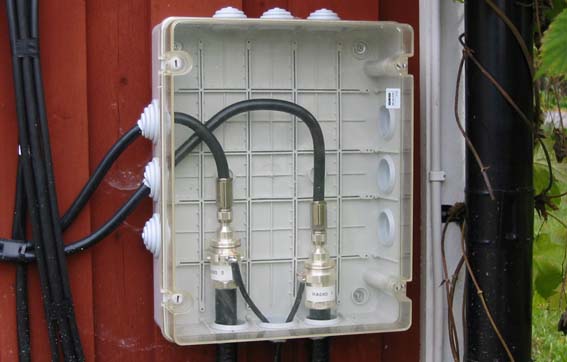|
|
SO1R - SO2R or ? |
|
Since we have plenty of storage area on the premessis we
decided to make one major operating position in the house - This is where
all single operator contests as well as casual operating is conducted.
When a larger multi-multi effort is made 4 other alternative positions are available by just re-arranging some of the equipment this way six bands can be operated. The crew have to bring their own XCVRS, PA´s etc.. |
|
The normal operating position: |
|
The main operation position shows the ICOM tranceivers. IC 781 (used as spare, i.e. not connected). IC 756 PRO (standby rig, can be switched in to replace either Radio1 or 2) and IC 7800 (Radio1), IC 775 (Radio2). The 2R switching is done by an EZMaster - read more about it on the Two Radio page. Another ICOM, IC 726 is on the shelf and second standby. Above the Tranceivers, the remote control of the PA´s can be seen. The reminder of the operation area includes the antenna switches and rotator control box as well as 144 and 432 MHz tranceivers. The latter only used for local FM traffic.
The rotator controls for each mast are identical and use pulse indication that shows the direction in degrees. Changing the directions is very easy. Just tick in the new bearing and flick the control to the left or right to enable counter- or clockwise rotation of the masts. The masts are parked in 270o direction.
IC 7800 (Radio1)
IC 775 (Radio2)
IC 756 PRO (Standby)
IC 781 (Spare)
The 2 PA's are both placed on the floor. One is fed by 3-phase and one by single phase mains. Both are remote controlled and follow the band changes made by the tranceivers. The thermometer on the floor shows the input and output temperature of the air cooling the PA. The power supply has been rebuilt with a single 3-phase HV transformer. The original power supply included 3 HV transformers but one failed due to bad internal isolation.
The remote units of the amplifiers are shown below:
The result of many hours of contesting can be seen on the walls.
The jumper cables leading to the shack. |

